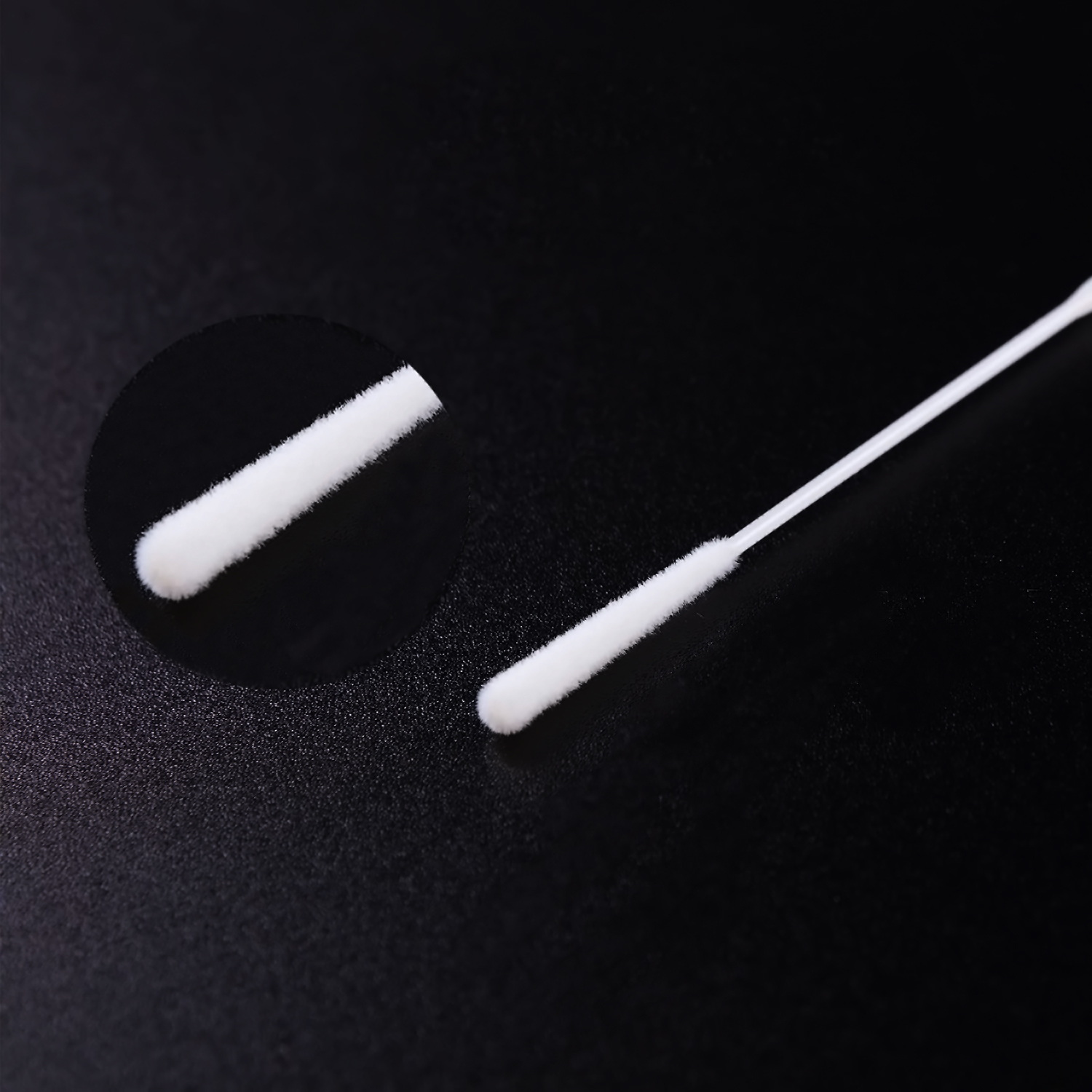Oct . 03, 2025 11:10 Back to list
Nasal Swab: Nylon Flocked, Sterile & Gentle—Best Choice?
Sterile Flocked Sampling Swab: field notes from a lab-obsessed editor
If you work in diagnostics, you’ve probably handled a nasal swab more times than you can count. I certainly have, and, to be honest, the humble swab has changed more in the last five years than in the decade before. Flocked tips, better breakpoints, faster elution—small upgrades that quietly move the needle on accuracy and patient comfort.

What’s trending (and why it matters)
Three trends are obvious: 1) flocked fibers replacing foam for higher recovery; 2) standardized, safer breakpoints for cleaner transfers; 3) multi-platform compatibility so one nasal swab can serve antigen, molecular, and culture workflows. Many customers say their invalid rates dropped once they switched to high-density flocking—surprisingly, technique variation shrinks when elution is quick and consistent.
Product snapshot: Sterile Flocked Sampling Swab
Origin: No.136, Shiji West Road, Gaobeidian City, 074000, Hebei Province, P.R. China. The ergonomics? Better than you’d expect: a gentle brush texture plus an anatomical shaft profile. The headline feature is rapid, automatic elution—vortex for a few seconds and you’re done.

Specification (lab-facing details)
| Parameter | Typical value | Notes |
|---|---|---|
| Tip material | Nylon flock (electrostatic) | High surface area, low entrapment |
| Shaft | ABS/PBT with safe breakpoint | Common at 30/80/100 mm, ≈7–10 N force |
| Absorption | ≈ 90–150 μL | Real-world use may vary by viscosity |
| Elution efficiency | > 90% in ≤ 10 s vortex | Internal QC, n≈30; buffer PBS/viral media |
| Sterilization | EO or Gamma (SAL 10^-6) | EO residuals per ISO 10993-7 |
| Shelf life | 24–36 months | 15–30°C, dry storage |
| Certifications | ISO 13485 QMS | Biocompatibility ISO 10993 |
Where it’s used
Rapid antigen tests, EIA/ELISA, RT-PCR and other molecular assays, DFA, cytology, forensic swabbing, plus bacteriological and virological culture. In clinics and public health labs, a nasal swab that elutes fast speeds triage; in forensic or veterinary work, the clean breakpoints help avoid contamination in cramped spaces. Users keep telling me the comfort factor is noticeable—less flinch, better compliance.

How it’s made (short version)
Materials: medical-grade nylon flock, ABS/PBT shafts, medical adhesive. Methods: electrostatic flocking onto a tapered head; curing; automated breakpoint scoring; pouching with desiccant; EO or gamma sterilization; release testing. Testing standards: bioburden (ISO 11737), sterility assurance (EN 556-1), EO residuals (ISO 10993-7), mechanical strength (ASTM D638-like pull), visual and fiber-shedding checks (CLSI GP standards). Service life is validated via accelerated aging and periodic real-time pulls. Not glamorous, but vital.

Vendor snapshot (quick comparison)
| Vendor | Flock density | Breakpoints | Sterilization | Certs | Lead time | MOQ |
|---|---|---|---|---|---|---|
| PrisesBio Sterile Flocked Sampling Swab | High (≈18–22 g/m²) | 30/80/100 mm | EO/Gamma | ISO 13485 | 2–4 weeks | ≈5,000 pcs |
| GlobalBrand A | Medium | 80/100 mm | EO | ISO 13485, CE | 3–6 weeks | 10,000 pcs |
| BudgetLab B | Variable | Single point | EO | Basic QMS | 4–8 weeks | 20,000 pcs |
Customization options: handle length and flexibility, tip diameter, flock length/density, breakpoint location, single vs. twin pouch, barcodes/UDI, sterile media kits. It seems small, but a 2 mm tip change can transform a nasal swab in pediatric clinics.
Real-world feedback and a quick case
From a city hospital network: switching to flocked nasal swab kits cut “insufficient specimen” flags by ≈22% month-on-month, and PCR Ct values tightened by ~0.6 cycles on average (n≈400). Another lab lead told me sample release “felt instantaneous”—a bit subjective, but the data matched.

Compliance notes
Typical references include FDA EUA guidance for respiratory specimen collection, CDC respiratory sampling procedures, and ISO 13485/10993 frameworks. Always align with your assay IFU—platforms do vary.
Bottom line
If you want measurable uptake, rapid elution, and fewer retakes, a modern flocked nasal swab is the quiet upgrade your workflow will actually feel.
Authoritative citations
- CDC. Collection of Nasopharyngeal and Nasal Specimens for Detection of Respiratory Viruses. https://www.cdc.gov/ (accessed 2025).
- FDA. Guidance on Respiratory Specimen Collection Devices and EUA Policies. https://www.fda.gov/ (accessed 2025).
- ISO 13485:2016 Medical devices — Quality management systems.
- ISO 10993-7:2008 Biological evaluation of medical devices — EO residuals.
- EN 556-1: Sterilization of medical devices — Requirements for terminally sterilized devices.
- CLSI GP41/GP33: Collection of Diagnostic Specimens by Healthcare Personnel.
-
Rapid Syphilis Test Kits – Fast, Reliable Diagnosis for Global Health
NewsNov.21,2025
-
Fast Syphilis Test: Rapid, Reliable Diagnostics for Global Health
NewsNov.20,2025
-
Serology Syphilis Test: Global Importance and Latest Diagnostic Advances
NewsNov.20,2025
-
Diagnose Syphilis Test – Essential Screening & Diagnostics Explained
NewsNov.19,2025
-
Comprehensive Guide to Diagnosis Syphilis Test Technologies & Applications
NewsNov.19,2025
-
Comprehensive Guide to Syphilis Test Dubai – Early Detection & Reliable Screening
NewsNov.18,2025

